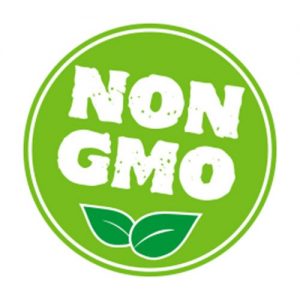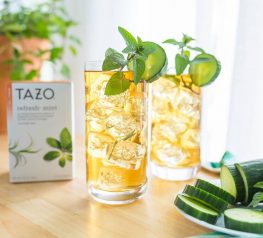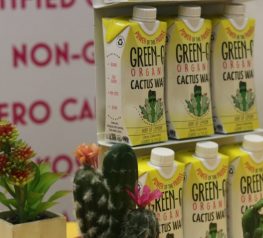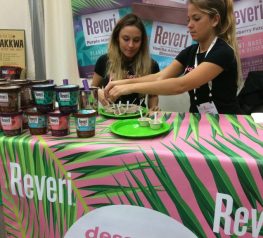Is Organic Non-GMO? Compare Opportunities
Organic and Non-GMO: Is There a Difference?

You’re searching for grocery items to sell in your online or brick-and-mortar store, and you come across a food with the “USDA Organic” label. Soon, you find a second product, one that is “Non-GMO Project Verified,” or made without genetically modified ingredients. However, this second product does not have the USDA seal anywhere on its package. After browsing a bit longer, you see a food with both USDA Organic and Non-GMO seals. This confuses you. So the question becomes, is organic non-GMO? If not, what’s the difference between organic and non-GMO? In this article, I will define the standards required to get foods certified and labeled as “Organic“ or “Non-GMO.” I’ll set forth whether organic foods do not have genetically modified ingredients by comparing the two certifications. Finally, I’ll provide an overview of the market potential for these products.
An Overview of Organics
What is Organic Food? How does it get Produced?
- The USDA defines organic food as produced without the use of synthetic chemicals and substances. Examples of these unauthorized substances include pesticides, chemical fertilizers, and dyes. (Organic food producers may use most naturally occurring aids).
- Organic farmers create “buffer zones,” or barriers around their organic crops, to protect the crops and soil from synthetic substances. “Buffer zones” sometimes consist of crops not designated organic in order to protect the organic crops from neighbors’ pesticides.
- If farmers are raising their animals to produce organic milk, eggs or meat, they must give their animals 100% organic feed. Antibiotics and artificial growth hormones are off-limits.
- Food processors cannot use artificial colors, flavors, sweeteners, or preservatives in organic products.
Becoming Certified
- By law, if a U.S. farm, food handler or food processor sells over $5000 worth of organic products in a year, the USDA must certify the food as produced without synthetics. Afterwards, the USDA would allow the food producer to use the word “organic” on the food packaging.
- (If you sell organic groceries that are pre-packaged, you don’t need USDA certification to sell the products. Only those that grow, handle and package organic food must be certified as organic).
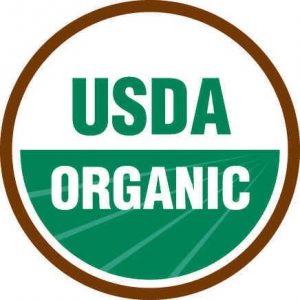
- A food with the claim “100 percent organic” has to be verified as completely organic by the USDA.
- If a producer wants to use the “USDA Organic” seal on a food, that food must be at least 95% organic.
- If a food does not quite meet the standards for the USDA seal, there is another option: the words “Made with Organic.” However, for a food to have the label “Made with Organic,” that food must have at least 70% organic ingredients.
- Under existing U.S. law, food that does not meet these standards cannot be advertised as “organic.”
What Are GMOs?
- A GMO can be defined as a genetically modified organism or a species that was injected with the gene of another species. (For example, a tomato that has fish genes would qualify as a genetically modified organism).
- GMOs have gene combinations typically not found in nature.
- Producers that genetically modify food try to transfer traits from one species to another. For example, they will sometimes use genetic modification to alter a food’s appearance or make it more resistant to pesticides.
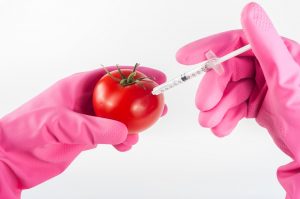
Common Genetically Modified Ingredients
- Ingredients with commercially produced genetically modified versions include both plant and animal products.
- Some plants with genetically modified versions are corn, canola, soy, alfalfa, papaya, sugar beet, zucchini, and yellow summer squash.
- The most commonly modified food is corn, followed by soy. (Nearly 85% of United States corn is genetically modified, and genetically modified soy has more modifications than any other food.)
- Milk, eggs, seafood, and meat can become genetically modified if animals eat feed made with genetically modified ingredients. Unfortunately, corn and soybeans, the most common genetically modified foods, are also common in animal feed.
- Cloned animals by definition squarely fit into this category.
- Honey can easily end up with genetically modified ingredients if a bee pollinates or gathers nectar from genetically modified plants.
- Other genetically modified ingredients that can end up in processed food include corn syrup, sweeteners made from sugar beets, yeast, proteins, vitamins, and enzymes.
- Synthetic ingredients, like artificial colors, flavors, and sweeteners.
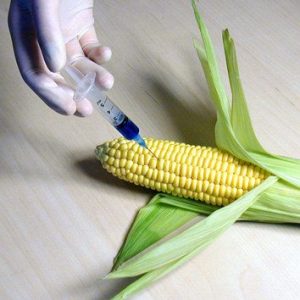
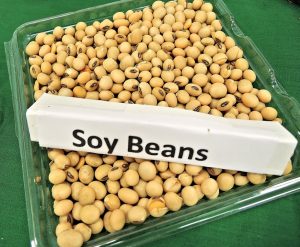
Dangers of GMOs
- GMOs have not been verified as safe to eat.
- Also, no one knows the long-term effects of eating genetically modified food.
- Producers of genetically modified foods usually use far more harmful pesticides than producers of unmodified foods. These pesticides damage both consumers’ health and the environment.
Conscious Consumers
- Consumers want to know if their food contains genetically modified products because they are aware of the dangers of GMOs.
- Nearly 80% of packaged food in the U.S. contains genetically modified ingredients. In the U.S., though, no government agency requires producers to label products with genetically modified ingredients.
Non-GMO: What You Need to Know
To inform consumers who want to avoid genetically modified foods, producers label grocery products without genetic modifications.
Becoming Verified
- The most common label is The Non-GMO Project verification, an independent, nonprofit program that marks U.S. and Canadian foods that are not genetically modified. Products verified by this organization bear a “Non-GMO Project Verified” seal with an orange butterfly.
- The Non-GMO Project reports that it has certified “more than 43,000 verified products for over 3000 brands.”
- Third parties monitor producers who want this verification through all steps of production to check for best practices in avoiding genetically modified ingredients.
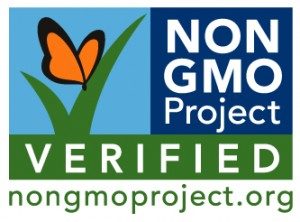
Preventing Cross-Contamination
- Some of these best practices include farms’ use of different buffer zones to prevent cross-contamination with genetically modified products.
- Cross-contamination can occur when bees or butterflies transfer pollen from a genetically modified plant to a non-modified plant.
- This cross-pollination causes the previously non-GMO plant to become genetically modified because it receives and permanently keeps the modified gene.
- For a product to earn Non-GMO Project Verification, a processor must test all of the ingredients they include to make sure they contain no modified genes.
- They must repeatedly test commonly modified, high-risk ingredients or ingredient types in their raw material forms. (For example, corn needs testing before processors turn it into corn flour.)
- Despite the project’s rigorous standards, though, there is no way to confirm that a product is 100% free of genetic modifications. Instead, the non-GMO verification confirms that 0.9% or less of a food includes genetically modified ingredients.
Organic and Non-GMO: Comparing the Two
What is the difference, if any, between organic and non-GMO?
- A product labeled organic or “made with organic” would not contain genetically modified ingredients, because the USDA does not allow any GMOs in organic foods. According to the USDA, “this means an organic farmer can’t plant GMO seeds, an organic cow can’t eat GMO alfalfa or corn, and an organic soup producer can’t use any GMO ingredients.”
- Since organic means non-GMO, organic farmers must prevent cross-contamination with genetically modified products.
- Farmers will create buffers to protect their plants from both cross-pollination and pesticides. Otherwise, GMOs might creep into their products, causing them to lose their organic label.
- Organic handlers and processors must confirm that they have not used genetically modified ingredients. They must also keep organic and non-organic ingredients and products separate. Processors must be careful to not mix in potentially modified products.
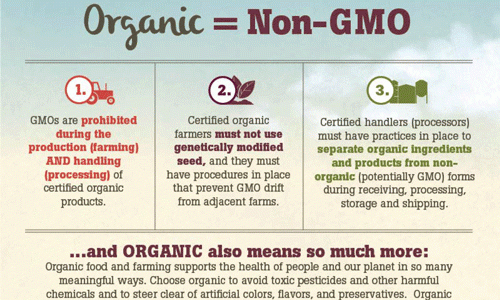
- Both organic farms and non-GMO farms use buffer zones to prevent contamination, but some non-GMO farms are not organic. After all, the Non-GMO Project does not check if verified products are free of synthetic pesticides.
- Because of this, a product can have the Non-GMO Project Verification, but not meet USDA Organic standards.
- However, if you see a product with the USDA Organic seal, you can be confident that it has no genetically modified ingredients.
Organic products are always Non-GMO, but some Non-GMO products are not organic.
Business Potential of Organic and Non-GMO
- Products labeled organic and non-GMO are an ideal choice for your grocery business, due to their attractiveness to consumers.
- Those who sell Non-GMO Project Verified products in their stores reported that this segment was responsible for the highest dollar growth trends, and “annual sales of Non-GMO Project Verified products now exceed 19.2 billion.”
- The Nutrition Business Journal also attests to the success of organic and non GMO products: it confirmed an 80% increase in sales of products certified as organic and non-GMO.

The trends have continued steadily, as shown in a 2015 Nielsen study.
- According to this study, 80% of North American respondents said they would pay more for foods that indicate a degree of healthfulness, such as those labeled “Non-GMO.”
- 43% of global respondents considered “natural” and “Non-GMO” very important food attributes that contribute to purchasing decisions. Researched rated these as the highest rated attributes in the study.
Tap into the sales growth of organic and non-GMO grocery products, at wholesale prices and without the inventory risk. Learn more about these reliable dropshipping opportunities today!

